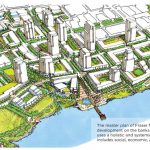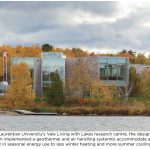
Across Canada, we are witnessing tremendous change, not only in our climate, but also in the urbanization of our cities. As our cities grow, we are experiencing greater pressures on our housing stock and community-wide infrastructure. In an often unpredictable and changing world, resilient design and planning is needed for our cities and communities to endure and thrive in both the short and long-term.
By: Kathy Wardle and Viren Kallianpur
While we must be aware of potential short and long-term shocks and threats facing our communities, as design professionals we have both a responsibility and an opportunity to implement solutions that offer hope to Canadians. This article offers a perspective on resilient design: the guiding principles, best practices, and tools that are available to practitioners today.
There is both commonality and differences in the various Canadian cities in terms of their stressors and threats. With four out of five people in Canada living in cities, the resulting higher density and population in urban areas mean that cities are both agents for climate impacts and solutions.
Growing population through migration and immigration, the rising demand for transportation, and the growing need for infrastructure to provide safety, comfort, and security all combine to create different pressures on our cities.
The global nature of the world we live in also means that stressors and threats faced by other nations have either a direct or an indirect impact on our cities. While global in nature, these impacts need to be resolved at the local level through political will, technical expertise, and individual commitment and responsibility. The effort to find solutions to these issues or problems lie in a more collaborative and collective approach through leadership, community engagement, and collective action.
While climate change is one of the most important drivers for discussions regarding resilience, the conversations should not be limited to climate change; resilience needs to be looked through social, economic, and environmental lenses to identify risks—natural and manmade, acute and chronic—and respond through design and operations planning. Resilience needs to be addressed at multiple levels from a single building, to a district, city and regional level. Policies, strategies, and initiatives at each scale influence the resilience and performance at other scales.
Kathy Wardle, LEED BD+C RELi AP, is Associate Principal, Director of Sustainability, and Viren Kallianpur, AICP, LEED AP BD+C, RELi AP, is Associate, Urban Design Practice, both of Perkins+Will in Vancouver.



